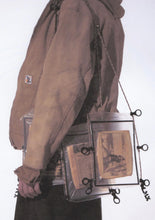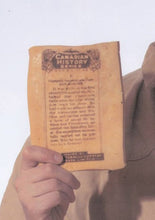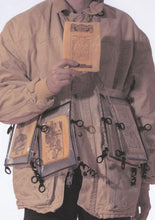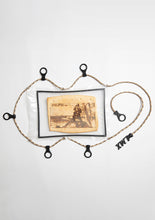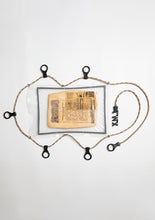LMX_58.1 Canadian History Hardtack
LMX Unlimited
Regular price
$50.00
Sale
Only 1 remaining
LMX_58.1 | Champlain Discovers Lake Champlain, about 1609
Hardtack cracker laser etched with a reproduction of a secret message intended for fellow Hunter Initiates in 1926 Canada.
Hardtack can be eaten as is, cooked or displayed.
Packaging includes utility cord and matte black plastic fixtures.
Lasts indefinitely unopened and protected from moisture.
These images are reproductions of cigarette cards produced by Imperial Tobacco and sold in Canada in 1926. A British company, Imperial Tobacco was founded in 1901 as a conglomeration of 13 preexisting British Tobacco concerns. This monopoly firm quickly expanded overseas and began to dominate the North American market via acquisitions and mergers. A 1911 Supreme Court anti-trust ruling lead to the dissolution and break-up of Imperial’s presence of the continent. In the rush to divest, the firm’s Canadian division was left vestigial, allowing it a semi-independence over packaging and printing. The demands of American tobacco and British capital would set the terms of operation, but Imperial Tobacco in Canada would operate with semi-autonomy until 1973.
This specific conjunction explains why the Canadian edition of the 1926 History of Canada collectible cigarette cards feature minor, but significant, visual changes from their counterparts produced in the United Kingdom. The cigarette card was a practical contrivance meant to stiffen packaging and protect the product while also introducing the contingency of a ‘collectible’ prize into the daily habits of its users. While the 1926 History of Canada cards were included in cigarettes sold across the world, the cards released in Ontario and Quebec included were modified in such a way as to communicate coded messages. These subtle alterations reference the baroque and highly secret hand gestures of the Hunter’s Lodge.
After the failed revolutions of 1837, exiled Canadian combatants fled into the United States, where, along with sympathetic Americans, they created a patchwork secret guerrilla force known as the Hunters. This secret militia would stage a series of open invasions attempts as well as an extensive set of subterranean sabotage and intelligence operations over the next 50 years, defining an axis of struggle inherent to the Canadian Orange State.
The coded cards, which feature hidden hand gestures and irregular text, are scarce and their purpose is obscure. LMX Unlimited was able to collect images of four separate cards which seem to illustrate historical gradations within the hierarchy of the Hunters. The mechanics of their purpose or the logic of their printing remain unknown, but they do roughly correspond to a renewed interest in cross border conflict and insurgent organizing against the state in 1920’s Canada. These trends culminate in the well known 1937 uprising and guerrilla conflicts in Ontario and Quebec, in which several factions claimed an aesthetic and spiritual connection to the 19th century Hunters.






